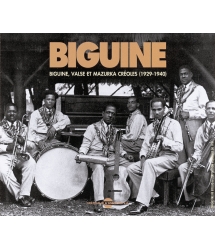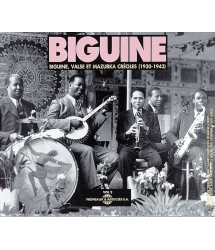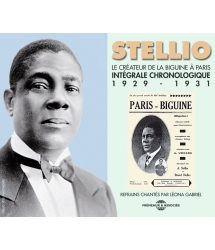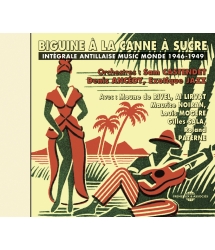- Our Catalog
- Philosophy
- Philosophers of the 20th century and today
- History of Philosophy (PUF)
- Counter-History and Brief Encyclopedia by Michel Onfray
- The philosophical work explained by Luc Ferry
- Ancient thought
- Thinkers of yesterday as seen by the philosophers of today
- Historical philosophical texts interpreted by great actors
- History
- Books (in French)
- Social science
- Historical words
- Audiobooks & Literature
- Our Catalog
- Jazz
- Blues
- Rock - Country - Cajun
- French song
- World music
- Africa
- France
- Québec / Canada
- Hawaï
- West Indies
- Caribbean
- Cuba & Afro-cubain
- Mexico
- South America
- Tango
- Brazil
- Tzigane / Gypsy
- Fado / Portugal
- Flamenco / Spain
- Yiddish / Israel
- China
- Tibet / Nepal
- Asia
- Indian Ocean / Madagascar
- Japan
- Indonesia
- Oceania
- India
- Bangladesh
- USSR / Communist songs
- World music / Miscellaneous
- Classical music
- Composers - Movie Soundtracks
- Sounds of nature
- Our Catalog
- Youth
- Philosophy
- News
- How to order ?
- Receive the catalog
- Manifesto
- Dictionnary











- Our Catalog
- Philosophy
- Philosophers of the 20th century and today
- History of Philosophy (PUF)
- Counter-History and Brief Encyclopedia by Michel Onfray
- The philosophical work explained by Luc Ferry
- Ancient thought
- Thinkers of yesterday as seen by the philosophers of today
- Historical philosophical texts interpreted by great actors
- History
- Books (in French)
- Social science
- Historical words
- Audiobooks & Literature
- Our Catalog
- Jazz
- Blues
- Rock - Country - Cajun
- French song
- World music
- Africa
- France
- Québec / Canada
- Hawaï
- West Indies
- Caribbean
- Cuba & Afro-cubain
- Mexico
- South America
- Tango
- Brazil
- Tzigane / Gypsy
- Fado / Portugal
- Flamenco / Spain
- Yiddish / Israel
- China
- Tibet / Nepal
- Asia
- Indian Ocean / Madagascar
- Japan
- Indonesia
- Oceania
- India
- Bangladesh
- USSR / Communist songs
- World music / Miscellaneous
- Classical music
- Composers - Movie Soundtracks
- Sounds of nature
- Our Catalog
- Youth
- Philosophy
- News
- How to order ?
- Receive the catalog
- Manifesto
- Dictionnary
ROBERT MAVOUNZY – AL LIRVAT – GÉRARD LA VINY AVEC ALAIN JEAN-MARIE ET SON TRIO
Ref.: FA5458
EAN : 3561302545820
Artistic Direction : JEAN-PIERRE MEUNIER
Label : Frémeaux & Associés
Total duration of the pack : 1 hours 4 minutes
Nbre. CD : 1
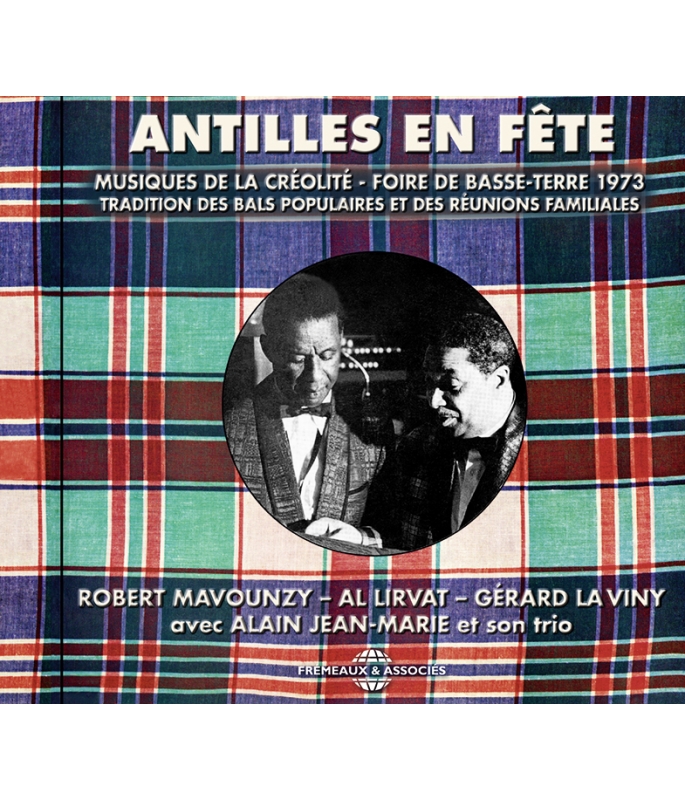
ROBERT MAVOUNZY – AL LIRVAT – GÉRARD LA VINY AVEC ALAIN JEAN-MARIE ET SON TRIO
ROBERT MAVOUNZY – AL LIRVAT – GÉRARD LA VINY AVEC ALAIN JEAN-MARIE ET SON TRIO
“Here, together for the first time, we have two different musical environments that are typical of French West Indian traditions: music played with a clarinet and trombone in popular dances, and the music of family reunions, with a guitar and violin. In restoring these two styles to their glory, in 1973 the Guadeloupe producer Raymond Célini brought the best musicians into the studio.” Jean-Pierre MEUNIER
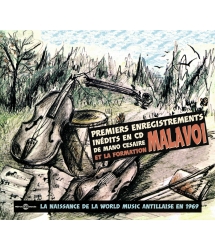
PREMIERS ENREGISTREMENTS (1969)
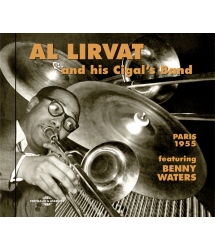
AL LIRVAT INCLUDED BENNY WATERS
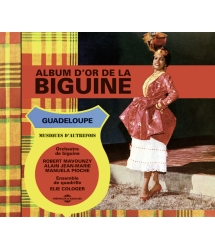
GUADELOUPE - MUSIQUES D'AUTREFOIS
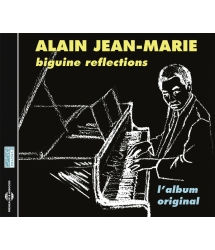
ALAIN JEAN-MARIE




-
PisteTitleMain artistAutorDurationRegistered in
-
1Pleurez, pleurez, chabinAl Lirvat, Robert Mavouzy, Alain Jean-Marie…00:03:231973
-
2A l'ombre des palmiersAl Lirvat, Robert Mavouzy, Alain Jean-Marie…00:02:381973
-
3Quand mêmeAl Lirvat, Robert Mavouzy, Alain Jean-Marie…00:03:161973
-
4Serpent maigreAl Lirvat, Robert Mavouzy, Alain Jean-Marie…00:03:321973
-
5Vloppez moin doudouAl Lirvat, Robert Mavouzy, Alain Jean-Marie…00:03:341973
-
6La peau fromageAl Lirvat, Robert Mavouzy, Alain Jean-Marie…Leona Gabriel00:03:161973
-
7Moin descenn Saint-PierreAl Lirvat, Robert Mavouzy, Alain Jean-Marie…00:03:021973
-
8LaetitiaAl Lirvat, Robert Mavouzy, Alain Jean-Marie…00:03:111973
-
9Ba moin on ti boAl Lirvat, Robert Mavouzy, Alain Jean-Marie…Traditionnel00:03:231973
-
10La ri zabymeAl Lirvat, Robert Mavouzy, Alain Jean-Marie…Traditionnel00:03:161973
-
11Ce Saint-ClaudeGérard La Viny, Alain Jean-Marie…Gérard La Viny00:02:521973
-
12BougoGérard La Viny, Alain Jean-Marie…00:03:081973
-
13Bon dieu bonGérard La Viny, Alain Jean-Marie…Boris Vian00:02:041973
-
14CrapaudGérard La Viny, Alain Jean-Marie…00:03:111973
-
15Papa papaGérard La Viny, Alain Jean-Marie…00:02:461973
-
16SucreGérard La Viny, Alain Jean-Marie…00:03:371973
-
17LolitaGérard La Viny, Alain Jean-Marie…00:02:591973
-
18Bateau la presseGérard La Viny, Alain Jean-Marie…00:02:591973
-
19Ce la foire à Basse-TerreGérard La Viny, Alain Jean-Marie…Gérard La Viny00:02:321973
-
20Ba moi on ti boGérard La Viny, Alain Jean-Marie…00:03:091973
-
21Ce Saint-Claude (instrumental)Gérard La Viny, Alain Jean-Marie…Gérard La Viny00:02:501973
Antilles en fête FA5458
ANTILLES EN FÊTE
TRADITION DES BALS POPULAIRES ET DES RÉUNIONS FAMILIALES
ROBERT MAVOUNZY – AL LIRVAT – GÉRARD LA VINY
avec ALAIN JEAN-MARIE et son trio
ANTILLES EN FÊTE
L’année 1973 en Guadeloupe est marquée par un événement dont la préparation va mobiliser l’activité des habitants durant des mois. Pour la première fois dans l’histoire des Antilles, les chambres de commerce de Guadeloupe, Guyane, Martinique conjuguent leurs efforts et leurs moyens pour organiser une grande manifestation dédiée à la mise en valeur et à la coordination économique des trois départements d’Outre-Mer. Il s’agit de la première foire des Antilles-Guyane qui se tiendra à Basse-Terre, chef-lieu et centre administratif de la Guadeloupe, du 10 au 25 novembre 1973. En complément des animations commerciales mises en place dans toute la ville, un hall d’exposition, vaste forum de rencontre et d’échange, abrite des stands pour chaque département. On y présente les ressources économiques, administratives, culturelles, touristiques… mais aussi des spectacles, des attractions et des jeux. Le public peut admirer une spectaculaire reconstitution de la chute du Carbet. Le samedi 10 novembre, la foire de Basse-Terre est inaugurée avec fanfare et majorettes par le préfet Jacques Le Cornec entouré d’une délégation d’élus et de personnalités des départements. Un cachet de commémoration fut utilisé durant toute cette période par la Poste de Guadeloupe.
Désireux de promouvoir la musique de son pays, le producteur guadeloupéen Raymond Célini, qui avait déjà commencé à publier une série d’albums consacrés au folklore des Antilles (Malavoi, Album d’Or de la Biguine… réédités par Frémeaux & Associés), entreprit de réaliser deux nouveaux disques spécialement pour la Foire de Basse-Terre.
En 1973, la crème des musiciens guadeloupéens avait quitté les Antilles, à l’horizon trop étroit, pour aller chercher un avenir plus prometteur en France continentale. Le dernier en date était le pianiste Alain Jean-Marie, parti pour réaliser son rêve d’accomplir une carrière de jazzman à part entière. Au terme d’une tournée de trois mois au Maroc avec le chanteur haïtien Jho Archer (1943-2005), il s’était retrouvé début mars 1973 à Paris avec son trio “Liquid Rock” (créé en 1971 à la Martinique avec le bassiste Winston Berkeley originaire de la Grenade et le batteur martiniquais Jean-Claude Montredon). Âgé de 28 ans, Alain Jean-Marie avait déjà derrière lui un long parcours professionnel. Il avait commencé en Guadeloupe à l’âge de quinze ans en formant son premier orchestre de danse : le “Sabor Combo”. Puis durant les intrépides années soixante, il avait multiplié les expériences, engrangé les enseignements, jouant de manière presque boulimique avec la quasi-totalité des musiciens de Martinique et de Guadeloupe. Il avait accompagné les saxophonistes Robert Mavounzy et Émilien Antile revenus aux Antilles à partir de 1964 et n’avait cessé d’élargir son univers musical à l’écoute des meilleurs pianistes et saxophonistes américains de la mouvance bop. En 1967, Alain Jean-Marie avait joué à l’Exposition Universelle de Montréal où il avait rencontré le pianiste Marius Cultier et le batteur Jean-Claude Montredon. Il était revenu se produire chaque été à Montréal jusqu’en 1970. Pendant toute cette période, au sein des formations les plus diverses, Alain Jean-Marie avait apporté son concours à de nombreuses séances chez Célini mais aussi chez Henri Debs pour qui il avait enregistré le premier disque à son nom : “Piano Biguines” (1968).
L’idée de Raymond Célini était de produire un album de référence avec les meilleurs artistes capables d’interpréter la forme authentique de la biguine, dénaturée selon lui par toutes sortes d’influences extérieures. Il songea en premier lieu à Alain Jean-Marie et Robert Mavounzy (1917-1974) qui avaient enregistré en 1966 l’Album d’Or de la Biguine (réédition Frémeaux & Associés FA5259). Mais Robert Mavounzy lui aussi avait regagné Paris en 1970 et il se produisait dans l’orchestre d’Al Lirvat (1916-2007) à la brasserie de “La Cigale”. Pour réaliser son projet, Raymond Célini fut obligé pour la première fois de se déplacer à Paris au printemps 1973.
HOMMAGE À STELLIO
Raymond Célini demanda à Al Lirvat de préparer un florilège des plus belles biguines et mazurkas du folklore antillais. Quelques mois plus tôt, la firme CBS avait ressorti en microsillon une sélection de 78 tours enregistrés à Paris de 1929 à 1938 par le clarinettiste martiniquais Alexandre Stellio (1885-1939). Ayant vécu à Saint-Pierre avant la catastrophe du 8 mai 1902, Stellio était l’un des derniers acteurs de la légende musicale de la ville disparue. La réédition CBS avait pu voir le jour grâce aux recherches du chanteur guadeloupéen Gilles Sala, le premier à avoir pris conscience de la nécessité de sauvegarder les enregistrements anciens et oubliés pour perpétuer ce folklore et le transmettre aux nouvelles générations.
Al Lirvat était arrivé en 1935 à Paris à l’âge de 19 ans. Il avait bien connu Stellio. Il remplaçait son guitariste la nuit du 15 au 16 avril 1939 quand le clarinettiste s’effondra sur la scène du Caveau de la Huchette, victime du malaise qui entraîna sa mort le 24 juillet à l’hôpital de l’Hôtel-Dieu à Paris. Al Lirvat avait été marqué par cet événement. Il vit dans la proposition de Raymond Célini une occasion de rendre un hommage posthume à celui qu’il considérait comme le maître inégalé de la clarinette créole. Il retint les meilleurs titres que Stellio avait composés ou interprétés lors de sa courte mais prolifique carrière à Paris. On y trouve des grands classiques de la biguine comme “Pleurez chabin”, “Vloppez moin doudou” et le fameux “Serpent maigre” que Stellio avait arrangé à partir du ragtime “Tickled to death” composé en 1899 par le pianiste américain Charles Hunter (1876-1906). Al Lirvat partagea les parties de clarinette entre Maurice Noiran, spécialiste de la mazurka créole, et Robert Mavounzy qui avaient tous deux connu Stellio. Maurice Noiran (1912-1978) avait été l’un de ses plus fidèles disciples dès 1927 à la Martinique. Arrivé à Paris fin 1931, il était parvenu à égaler voire surpasser le Maître, atteignant des sommets dans l’expression et la sonorité de l’instrument. Quant à Robert Mavounzy, il avait croisé Stellio à l’Exposition Internationale de 1937 à Paris, dans l’Île des Cygnes où le maestro avait son orchestre au “Bar des Isles” alors que Robert Mavounzy jouait avec Roger Fanfant au Pavillon de la Guadeloupe.
Al Lirvat réalisa les arrangements de l’album, succinctement intitulé “Musique Folklorique” par Raymond Célini. Sans s’écarter de l’esprit ori-ginel, Al Lirvat au trombone y apporte sa touche de modernité, rehaussée par la stimulante pulsation de la section rythmique et les embellissements harmoniques d’Alain Jean-Marie. La clarinette de Maurice Noiran recrée le lyrisme flamboyant des envolées de Stellio alors que Mavounzy insuffle à ces morceaux une vitalité inédite, une fraîcheur tonique puisée dans tout le potentiel de son vécu de jazzman. Il est poignant de savoir que cette belle séance de Robert Mavounzy, entière-ment dédiée à la musique traditionnelle des Antilles, fut son dernier enregistrement. Il décédera l’année suivante, le 24 mars 1974, neuf jours avant son 57ème anniversaire. Maurice Noiran le rejoindra quatre ans plus tard, en 1978, à l’âge de 66 ans.
À LA FOIRE DE BASSE-TERRE
Figure emblématique de la chanson guadeloupéenne, Gérard La Viny (1933-2009) surnommé “L’Ambassadeur des Antilles” fut sollicité par Raymond Célini pour illustrer le second volet de sa production. Tout juste âgé de quarante ans, Gérard La Viny avait à son actif vingt années d’une brillante et féconde carrière d’auteur-compositeur, interprète, guitariste, chef d’orchestre, animateur de cabarets parisiens, carrière jalonnée de nombreux disques.
Issu d’une famille de souche basse-terrienne, Gérard La Viny (de son vrai nom Labiny) est né à Basse-Terre le 17 avril 1933. Son père, ingénieur de la ville aux Ponts et Chaussées, joue brillamment du violon et du piano. Sa mère, d’abord institutrice, se consacre ensuite à l’éducation de ses enfants qui seront huit. La musique est omniprésente à la maison. Dès l’âge de sept ans, Gérard commence à se passionner pour le violon qu’il apprend avec Henri Bathilde, un vénérable professeur de Basse-Terre qui ne se déplaçait qu’à cheval. Gérard intègrera bientôt l’orchestre de son école. Il a pour marraine une sœur de sa mère qui a épousé un Portoricain et qui réside depuis son mariage dans le pays de son mari. Après la fin de la seconde guerre mondiale, Gérard ira régulièrement passer les vacances scolaires chez elle à Porto Rico. Devenu adepte de la guitare, il découvrira avec émerveillement la musique de cette île et se perfectionnera en se joignant à des trios de guitaristes locaux. Ces fréquents séjours à Porto Rico lui confèreront une parfaite maîtrise de l’espagnol et de l’anglais. En Guadeloupe, le jeune Gérard écoute chaque jour les radios portoricaines et reproduit avec ses camarades les musiques qu’il entend. Peu après l’Armistice de 1945, Gérard accompagne à Paris son père venu pour un séjour professionnel de plusieurs semaines. Il reviendra de même avec sa famille en octobre 1948 mais cette fois pour toute une année scolaire, accomplissant sa classe de seconde au lycée Janson de Sailly. Après avoir obtenu son baccalauréat en Guadeloupe en juillet 1951, Gérard revient seul à Paris en octobre pour y poursuivre des études à l’Institut des Sciences Politiques mais la passion de la musique ne le lâche plus. Il continue de pratiquer la guitare avec Gérard Imanbakas, un ami étudiant à l’école dentaire. Par l’entremise de celui-ci, Gérard la Viny est engagé fin 1952 pour animer le restaurant antillais “La Créole” qui venait d’être ouvert par une ex-chanteuse antillaise, Liliane Harley, au 22 rue Cambacérès dans le 8ème arrondissement. Par son charme, son humour intarissable, son sens inné du contact humain, Gérard crée de suite un lien chaleureux avec le public, se forgeant chaque soir un énorme succès. Il interprète ses propres compositions et arrange des airs du folklore. Après la fermeture, il fait la tournée des cabarets de la Rive Gauche pour y passer en attraction. Sur les conseils de Liliane Harley, Gérard suit durant plusieurs années les cours de chant de Nick Tzico, un professeur roumain réputé à l’époque, grand spécialiste du Bel Canto. Consé-quence inévitable : la deuxième année à Sciences-Po est une catas-trophe et la bourse est supprimée. Il en résultera un drame familial quand ses parents en seront finalement avertis et le chanteur, abandonnant ses études, devra dès lors assurer seul sa subsis-tance à Paris. Quelques années plus tard, Gérard réussira à se réconcilier avec son père avant que celui-ci perde la vie dans le terrible accident du Boeing 707 de Guadeloupe le 22 juin 1962.
Gérard La Viny est de plus en plus demandé pour animer des fêtes privées et des galas. Parmi les clients de “La Créole”, il noue des relations déterminantes pour la suite de sa carrière. Des journalistes écrivent sur lui des articles élogieux. En mars 1954, Gérard La Viny fait ses premiers enregistrements chez Pathé en 78 tours dans l’orchestre de Félix Valvert avec la chanteuse Stella Félix, rencontrés tous deux à “La Créole”. Henri Salvador venu un soir, conquis par le talent du jeune artiste, le prend sous sa protection et le recommande à Boris Vian, directeur artistique des disques Fontana chez Philips. Cette collaboration avec Boris Vian donnera naissance à une série de 45 tours publiés de 1959 jusqu’au milieu des années soixante.
Au restaurant “La Créole”, Gérard La Viny fait la connaissance de Pierre Robert, un homme d’affaires qui rachète le cabaret de “La Canne à Sucre” en septembre 1955 et lui en confie la direction artistique. Durant plus de vingt années, Gérard La Viny établira la renommée internationale du fameux cabaret antillais de Montpar-nasse, fréquenté par de nombreuses célébrités. Parrainé par Joséphine Baker, Gérard La Viny lance le merengue en 1956, le calypso en 1957, et fait découvrir au public parisien la danse acrobatique du limbo. L’actrice afro-américaine de père philippin Marpessa Dawn (1934-2008), belle Eurydice d’“Orfeu Negro”, présentait chaque soir un fascinant numéro de danse quand le film de Marcel Camus reçut la Palme d’Or du Festival de Cannes en mai 1959. Gérard La Viny fut alors le premier à publier un disque de la musique du film, contribuant au succès de la nouvelle musique brésilienne à Paris. En 1977, Gérard La Viny abandonnera l’animation du cabaret pour créer une troupe de danseurs, danseuses et musiciens avec laquelle, accompagné de son fils Eddy, il présentera son célèbre “Show La Viny” à travers le monde et dans toute la France.
On comprend dès lors qu’en 1973 Raymond Célini ait voulu s’attacher le talent de Gérard La Viny pour assurer le succès de sa production. Voici comment Gérard présente le résultat de son travail au dos de la pochette du disque original :
“Cet enregistrement est l’expression de la musique de famille de chez nous. Mon père jouait du piano ainsi que deux de mes sœurs. Moi tout jeune, je pratiquais le violon. Nos amis, nos voisins jouaient tous d’un instrument : Banjo, mandoline, guitare, harmo-nica... Et le soir c’était un véritable orchestre qui s’installait au salon. Il en était ainsi de beaucoup de maisons qui se voyaient envahies de gens non invités, assis ou debout n’importe où dans le noir, qui écoutaient “la musique”.
Il est à noter dans de tels ensembles l’absence des cuivres (trompettes, saxos…) réservés pour les bals et les orchestres professionnels, et la grande participation féminine au piano, à la mandoline et même au banjo... Plus tard dans la nuit, on partait en sérénade. On jouait au clair de lune sous les fenêtres d’une fiancée ou simplement d’un ami mélomane. La porte s’ouvrait alors dans la joie réciproque. Nous nous retrouvions au salon à boire où à grignoter quelque chose et la musique reprenait de plus belle. Les voisins réveillés étaient vite de la partie et quel sujet de conversation pour la journée qui commençait déjà à notre départ !
Cette musique de famille, de salon, de sérénade a pour ainsi dire disparu. Il fallait absolument renouer avec cette ancienne et merveilleuse tradition. C’est chose faite grâce à cet enregistrement que mes amis musiciens et moi-même à la guitare et au banjo avons gravé avec joie et émotion.”
Pour ce disque comme pour le précédent, Raymond Célini, venu spécialement à Paris, avait voulu la participation du pianiste Alain Jean-Marie et de son trio. La formation était complétée de quelques musiciens de “La Canne à Sucre”. L’album “À la Foire de Basse-Terre” fut enregistré en mai 1973, au retour d’une tournée au Sénégal de Gérard La Viny et ses musiciens. Le brillant violoniste, au jeu plein d’élégance et de sensibilité, est Roger Collat, né à Fort-de-France le 4 mars 1941. Il est le plus jeune fils d’André Collat (1900-1953), lauréat de l’École Supérieure de Musique de Paris, qui fut éminent professeur de violon et de clarinette à la Martinique et dont l’épouse Andrée Thomert était mandoliniste. Comme ses deux frères aînés, c’est sous la férule de son père que le jeune Roger se forme à la musique classique, donnant son premier concert de violon à Saint-Pierre à l’âge de 8 ans. Trois ans après la mort d’André Collat, sa veuve vient vivre à Paris avec Roger âgé de quinze ans, pour y pratiquer son métier de modiste. Tout en poursuivant sa scolarité, Roger prend des cours particuliers avec Victor Gentil (1892-1973), professeur de violon à l’École Nationale de Musique. Après son service militaire à Bordeaux, Roger Collat commence à se produire les soirs de week-end à partir de 1965 dans des orchestres de cabarets, notamment à “L’Escale”, rue Monsieur le Prince à Paris, où il se joint aux groupes latino-américains “Los Calchakis” et “Los Machu-cambos”. Sans jamais devenir profes-sionnel à temps complet, cet artiste passionné ne cessera de fréquenter le monde des musiciens, jouant en toutes occasions et participant à des séances de studio en marge de son activité de cadre dans une grande administration nationale. Son goût éclectique pour tous les styles, tant jazz que classique et musiques du monde, lui a fait accompagner Moune de Rivel, Josy Mass, Jocelyne Béroard, tous les membres de la Compagnie Créole… mais aussi le guitariste de jazz Joseph Reinhardt, frère de Django, aux “Trois Mailletz”, rue Galande à Paris.
Les deux séances Célini du présent album se déroulèrent à quelques jours d’intervalle dans un petit studio parisien. Elles ne durèrent pas plus d’une journée chacune, sans répétition préalable, les musiciens connaissant déjà la plupart des morceaux. Alain Jean-Marie se rappelle avoir joué sur un simple piano droit. Les arran-gements et la mise en place furent chaque fois réglés le jour même, les solos étant improvisés par les musiciens.
Gérard La Viny est décédé à Paris le 6 octobre 2009 à l’âge de 76 ans. Ses obsèques en l’église de la Trinité et son inhumation au cimetière de Montmartre ont eu lieu le 14 octobre, en présence de la foule nombreuse et profondément émue de sa famille, de ses amis et admirateurs.
Jean-Pierre Meunier
© frémeaux & associés, groupe frémeaux colombini sa, 2014
Remerciements : Nicole et Émile Antile, Roger Collat, Christophe Hénault, Alain Jean-Marie, Gérard La Viny, Albert Lirvat, Jean-Claude Montredon.
ANTILLES EN FÊTE
In Guadeloupe, the year 1973 was marked by an event whose preparations kept the inhabitants busy for months on end. For the first time in the history of the Antilles, the Chambers of Commerce in Guadeloupe, French Guiana and Martinique were conjugating their efforts and resources to organize an immense event dedicated to the promotion and economic development of these three French overseas regions: the first “Antilles-French Guiana Fair” held in Basse-Terre, the Guadeloupe capital and administrative centre, on November 10-25, 1973. In addition to the commercial activities taking place throughout the municipality, an exhibition hall — a vast forum for meetings and exchanges — housed many stands representing the above dépar-tements or territories. Displays presented the economic resources of the region to visitors in addition to its administration, culture and tourist attractions… but there were also shows and games, and the public could admire a spectacular reconstitution of the Carbet River waterfalls. On Saturday November 10th the Fair was officially opened by the Prefect, Jacques Le Cornec, with a brass band and majorettes surrounded by a delegation of various personalities and elected representatives of the départements. The Post Office in Guadeloupe produced a special commemorative stamp for all the letters it distributed during the events.
In a desire to promote the music of his country, Guadeloupe producer Raymond Célini, who had already begun releasing a series of albums devoted to Antilles folk music (Malavoi, “Album d’Or de la Biguine”… reissued by Frémeaux & Associés), undertook the recording of two new albums specially for the Basse-Terre Fair.
In 1973, the cream of Guadeloupe’s musicians had left the French Caribbean, where their horizons were too limited, in search of a more promising future on the French mainland. The last to do so had been pianist Alain Jean-Marie, who left with dreams of a career playing jazz. After a three-month tour in Morocco with Haitian singer Jho Archer (1943-2005), in early March 1973 Alain Jean-Marie was in Paris with his “Liquid Rock” trio, which he’d set up in Martinique in 1971 (with bassist Winston Berkeley from Grenada and Martinique drummer Jean Claude Montredon). At the age of 28, Alain Jean-Marie already had a lengthy professional career behind him, having started playing in Guadeloupe at the age of fifteen when he founded his first dance-band, the “Sabor Combo”. During the intrepid Sixties he’d acquired even more experience, playing with almost every musician in Guadeloupe and Martinique (a kind of bulimia!). He accompanied saxophonists Robert Mavounzy and Émilien Antile after their return to the French Antilles in 1964, and constantly expanded his musical universe by listening to the best American bop pianists and saxophonists. In 1967 Alain Jean-Marie played at the Universal Exhibition in Montreal where he met pianist Marius Cultier (and drummer Jean-Claude Montredon) and he returned to Montreal to play every summer after that until 1970. Throughout this whole period, playing in widely-different groups, Alain Jean-Marie also provided invaluable support on numerous recording-sessions run by not only Célini but also Henri Debs, for whom he recorded his first album as a leader, “Piano Biguines” (1968).
With regard to the 1973 Fair, Raymond Célini’s idea was to produce an album that would be a reference: it would feature the best artists capable of performing in the authentic beguine style whose nature, in his opinion, had been completely changed by all sorts of outside influences. The first musicians who came to mind were Alain Jean-Marie and Robert Mavounzy (1917-1974), who in 1966 had recorded the “Album d’Or de la Biguine” (cf. above, reissued by Frémeaux on FA5259). But Mavounzy too had gone to Paris in 1970 and was then appearing with the orchestra of Al Lirvat (1916-2007) at the Parisian brasserie “La Cigale”… To bring his project to fruition, Raymond Célini was obliged for the first time to go to Paris, which he did in the spring of 1973.
TRIBUTE TO STELLIO
Célini asked Al Lirvat to prepare an anthology of the most beautiful beguines and mazurkas in the folk traditions of the Antilles. A few months earlier, the CBS label had released an LP with a selection taken from the 78s recorded in Paris between 1929 and 1938 by Martinique clarinettist Alexandre Stellio (1885-1939). Having himself lived in Saint-Pierre before the catastrophe of May 8th 1902, Stellio was one of the last surviving actors involved in the musical legend of the former town. The CBS reissue was released thanks to research carried out by Guade-loupe singer Gilles Sala, who’d been the first to realize the necessity of safeguarding such early, forgotten recordings so as to hand them down to future generations.
Al Lirvat had arrived in Paris in 1935 at the age of 19, and had known Stellio personally (he’d replaced his guitarist on the night of April 15/16th 1939 when the clarinettist collapsed onstage at the Caveau de la Huchette, later dying at the Hôtel-Dieu Hospital in Paris on July 24th). The episode had left a mark on Lirvat, and in Raymond Célini’s offer he saw the opportunity to pay a posthumous tribute to the musician whom he considered the unrivalled master of Creole clarinet. Lirvat chose the best titles composed or recorded by Stellio during his brief but prolific career in Paris: they include great beguine classics such as “Pleurez chabin”, “Vloppez moin doudou” and the famous “Serpent maigre” which Stellio himself had arranged, based on the ragtime piece “Tickled to death” (composed in 1899 by the American pianist Charles Hunter, b. 1876 – d. 1906). Al Lirvat shared the clarinet parts between Maurice Noiran, a Creole mazurka specialist, and Robert Mavounzy; both of them had known Stellio. Maurice Noiran (1912-1978) had been one of his most faithful disciples ever since 1927, in Martinique. After his arrival in Paris towards the end of 1931, he’d succeeded in rivalling — and even excelling — the Master, reaching the summits in his playing of the instrument. As for Robert Mavounzy, he’d met Stellio on the “Île des Cygnes” island in the Seine at the 1937 International Exhibition in Paris, while the Maestro’s orchestra was appearing at the “Bar des Isles” (Robert Mavounzy was playing at the time with Roger Fanfant, at the Guadeloupe Pavilion of the Exhibition.)
Al Lirvat did the arrangements for the album, which Raymond Célini succinctly entitled “Musique Folklorique”. Without straying from the concept’s original spirit, Al Lirvat on trombone provides a touch of modernity enhanced by the stimulating pulse from the rhythm section and Alain Jean-Marie’s harmonic embellishments. Maurice Noiran’s clarinet recreates the flamboyant lyricism of Stellio’s flights, while Mavounzy breathes a brand-new vitality into these pieces, a tonic freshness drawn from the full potential of his back-ground as a jazzman. A poignant note: this beautiful session, by Robert Mavounzy, entirely dedicated to traditional music from the Antilles, was to be his last recording. He died the following year on March 24th 1974, nine days before his 57th birthday. Maurice Noiran would join him only four years later in 1978 at the age of 66.
THE BASSE-TERRE FAIR
One emblematic figure in the songs and music of Guadeloupe was Gérard La Viny (1933-2009); his nickname was “L’Ambassadeur des Antilles”, and he was solicited by Raymond Célini to illustrate the second part of his production. Although only forty, La Viny already had a brilliant and prolific career of 20 years behind him, as singer-songwriter & composer, guitarist, bandleader, a popular figure in Parisian clubs, and a recording-artist with many releases to his credit. He was born Gérard Labiny on April 17th 1933 in Basse-Terre, where his family originated. His father was both a civil engineer and a brilliant pianist/violinist, and Gérard’s mother was a teacher before raising and educating her eight children.
Music was omnipresent at their home. By the time he was seven, Gérard had a passion for the violin, and he took lessons from Henri Bathilde — a venerable teacher in Basse-Terre who travelled on horseback — before joining his school orchestra. His godmother, one of his mother’s sisters, had married a Puerto Rican and was living in Puerto Rico after her marriage. After the end of World War II, Gérard would regularly spend his holidays with his aunt and marvelled at the discovery of the island’s music (later taking part in it by playing with Puerto Rican guitar trios during his visits). His frequent stays in Puerto Rico enabled him to master both Spanish and English. In Guadeloupe, the young Gérard listened to Puerto Rican stations every day, and played the music he heard with his comrades. Shortly after the 1945 Armistice, Gérard accompanied his father when he went to Paris for several weeks, and returned to the French capital with his family in October 1948, this time for a whole school-year, where he accomplished his 10th grade studies at the Lycée Janson de Sailly. He obtained his Baccalaureate in Guadeloupe in July 1951, and returned to Paris alone that October to further his studies at the Political Sciences Institute… although his passion for music would never leave him.
He continued playing the guitar with Gérard Imanbakas, a friend who was studying dentistry, and through the latter, Gérard la Viny was hired at the end of 1952 to appear at the Parisian restaurant specializing in Antilles cuisine called “La Créole”, which had just been opened in the 8th arrondissement by ex-singer Liliane Harley. Gérard La Viny’s charm, ever-present humour and innate human qualities immediately created a bond with his audiences, and he was a hit every night. He played his own compositions and wrote arrangements of traditional pieces, and he would cross the Seine after-hours to play in Left Bank cabarets. Liliane Harley encouraged him to spend several years taking singing lessons from Nick Tzico, a renowned Rumanian teacher who was a great Bel Canto specialist. There was an inevitable consequence of all this activity: his second year at what they still call “Sciences-Po” was a catastrophe, and his scholarship was cancelled. It was a traumatic experience for his parents when they learned of it, and the singer, abandoning his studies, had to fend for himself thereafter… A few years later, Gérard managed to become reconciled with his father, only to lose him in the terrible accident involving a Boeing 707 from Guadeloupe on June 22nd 1962.
Gérard La Viny was increasingly solicited to appear at private functions and shows. Some of the patrons at “La Créole” were influential and his friendly relations with them were decisive for the rest of his career: journalists were writing reviews full of praise, and in March 1954 he made his first 78rpm records for Pathé in Félix Valvert’s orchestra with singer Stella Félix, both of whom he’d met at “La Créole”; Henri Salvador was in the restau-rant one evening and, struck by the young artist’s talent, took La Viny under his wing and recommended him to Boris Vian, who was then the Artistic Director for the Fontana label at Philips. That collaboration with Boris Vian would give birth to a series of 45rpm records released between 1959 and the mid-Sixties.
At “La Créole”, Gérard La Viny also met Pierre Robert, a businessman who pur-chased the night-club called “La Canne à Sucre” in September 1955, making La Viny its Artistic Director. For more than twenty years, Gérard would ensure the inter-national reputation of that famous Caribbean cabaret in Montparnasse, a club whose patrons included many celebrities. Backed by Josephine Baker, Gérard La Viny would launch merengue in 1956, calypso in 1957, and also allow Parisian audiences to discover the acrobatic dance called the limbo; Afro-American actress Marpessa Dawn (1934-2008), whose father came from the Philippines, was the beautiful Eurydice starring in Marcel Camus’ film “Orfeu Negro”, and when the film received the famous Palme d’Or in May 1959 at the Cannes Film Festival, Marpessa Dawn would do a fascinating dance-number at “La Créole” every night. Gérard La Viny was the first to release a record of the music from that film, and it contributed to the Parisian success of the new music from Brazil. In 1977, Gérard La Viny would abandon his cabaret-work to create a dance-troupe accompanied by musicians, and, together with his son Eddy, he would appear with them in his famous “Show La Viny” both in France and around the world.
So it was no surprise that in 1973 Raymond Célini wanted to involve Gérard La Viny’s talent in his project and ensure the success of his production. This is what Gérard had to say about the result of his work, in the notes on the rear sleeve of the original recording:
“This recording is the expression of the music which was in our family home. My father played piano, and so did two of my sisters. When I was very young, I used to play violin. Our friends, our neighbours, all of them played an instrument: banjo, mandolin, guitar, harmonica... And in the evening, it was a veritable orchestra which sat down in our front-room. It was the same in many houses… they found themselves invaded by people who hadn’t been invited, either sitting down or standing anywhere they could in the dark, listening to ‘the music’.
In ensembles like these you can note the absence of brass (trumpets, saxes…) which were reserved for dances and professional orchestras, and the large numbers of women who took part, playing piano, mandolin, and even banjo… Later at night, we’d go serena-ding. We used to play in the moonlight under the windows of someone’s fiancée, or simply a friend who loved music. And a door would open, to our mutual joy. We would find ourselves in a sitting-room, with a drink in our hand and something to eat, and the music would start up again with even more vitality. Any neighbours who woke up would quickly join in, and what a thing we had to talk about for the rest of the day, which was already beginning when we left!
That family-music, one for salons and serenades, has now disappeared in a manner of speaking. It was absolutely vital to go back to that ancient and wonderful tradition. And now we have done so, thanks to this recording which my musician-friends and I, playing guitar and banjo, have made with joy and emotion.”
Raymond Célini went especially to Paris for this recording, as he had done for the previous one: he wanted pianist Alain Jean-Marie and his trio to take part, and their group was completed by a few musicians from “La Canne à Sucre”. The album “À la Foire de Basse-Terre” was recorded in May 1973 after Gérard La Viny and his musi-cians returned from a tour in Senegal. The brilliant violinist here, whose playing is filled with elegance and sensitivity, is Roger Collat (b. March 4th 1941 in Fort-de-France, Martinique), the youngest son of André Collat (1900-1953), a laureate of the École Supérieure de Musique in Paris who was an eminent violin and clarinet teacher in Martinique, and whose wife played the mandolin. Like his two elder brothers, the young Roger Collat was schooled in classical music by his father, and he gave his first violin concert in Saint-Pierre when he was eight years old. Three years after the death of André Collat, his widow went to live in Paris with Roger, then aged fifteen, to work in the fashion-trade. While still at school, Roger took lessons with Victor Gentil (1892-1973), a violin teacher at the École Nationale de Musique. After his military service in Bordeaux, Roger Collat began playing in the evenings at weekends from 1965 onwards, appearing in cabaret orchestras such as those at “L’Escale” in the rue Monsieur-le-Prince in Paris, where he would join in with Latin-American folk-groups like Los Calchakis and Los Machucambos. While never becoming a full-time professional, Roger Collat, an impassioned artist, never ceased being part of the world of musicians, playing at every opportunity in both clubs and studios while remaining a Civil Servant. His eclectic taste for all styles — jazz, classics and world music — brought him to accompany the likes of Moune de Rivel, Josy Mass, Jocelyne Béroard, all the members of the “Compagnie Créole”… and even the jazz guitarist Joseph Reinhardt, (the brother of Django) at the “Trois Mailletz” club in the rue Galande in Paris.
The two Célini sessions in the present album were held at a few days’ interval in a little Parisian studio. The sessions each lasted for less than a day, and there were no prior rehearsals (the musicians already knew most of the pieces by heart). Alain Jean-Marie recalls playing on a simple upright piano. The arrangements and the set-up were decided on the day itself, with the musicians improvising their solos.
Gérard La Viny passed away in Paris on October 6th 2009 at the age of 76. His funeral at Trinité Church, and his burial in Montmartre Cemetery, took place on October 14th in presence of a large, deeply emotional crowd of family, friends and admirers.
Jean-Pierre MEUNIER
English adaptation by Martin Davies
© frémeaux & associés, groupe frémeaux colombini sa, 2014
1. PLEUREZ PLEUREZ CHABIN. Biguine 3’23
(Stellio)
2. À L’OMBRE DES PALMIERS. Valse pasillo 2’38
(Stellio)
3. QUAND MÊME. Biguine 3’16
(Stellio)
4. SERPENT MAIGRE. Biguine 3’33
(Folklore antillais)
5. VLOPPEZ MOIN DOUDOU. Biguine 3’34
(Stellio)
6. LA PEAU FROMAGE. Biguine 3’17
(Stellio, Léona Gabriel)
7. MOIN DESCENN’ SAINT-PIERRE. Biguine 3’02
(Folklore de Saint-Pierre)
8. LAETITIA. Mazurka 3’11
(Eugène Delouche)
9. BA MOIN ON TI BO. Biguine 3’23
(Folklore antillais)
10. LA RI ZABYME. Mazurka 3’16
(Folklore antillais)
11. CÉ SAINT-CLAUDE. Chant : Gérard La Viny Biguine 2’52
(Gérard La Viny et Patricia La Viny)
12. BOUGO. Biguine 3’09
(Folklore antillais)
13. BON DIEU BON. Biguine 2’05
(Gérard La Viny, Émile Jochum, Boris Vian)
14. CRAPAUD. Biguine 3’12
(Sam Castendet)
15. PAPA PAPA. Biguine 2’47
(Gérard La Viny)
16. SUCRE. Biguine 3’37
(Folklore antillais)
17. LOLITA. Biguine 2’59
(Folklore antillais)
18. BATEAU LA PRESSÉ. Biguine 3’00
(Gérard La Viny)
19. CÉ LA FOIRE À BASSE-TERRE. Chant : Gérard La Viny Biguine 2’32
(Gérard La Viny)
20. BA MOIN ON TI BO. Biguine 3’10
(Folklore antillais)
21. CÉ SAINT-CLAUDE. Version instrumentale Biguine 2’51
(Gérard La Viny et Patricia La Viny)
Informations discographiques :
Titres 1 à 10 : Disque Célini “Aux Ondes” Réf. RCG 10030
Al Lirvat (trombone, chant dans 9), Maurice Noiran (clarinette dans 1, 2, 5, 8, 10), Robert Mavounzy (clarinette dans 3, 4, 6, 7, 9), Alain Jean-Marie (piano), Winston Berkeley (guitare basse), Jean-Claude Montredon (batterie). Paris, mai 1973.
Titres 11 à 21 : Disque Célini “Aux Ondes” Réf. RCG 10029
Gérard La Viny (guitare, banjo, chant dans 11 et 19), Roger Collat (violon), Alexandre Perval (2e guitare), Omer Chery (tumba, sillac, harmonica), Alain Jean-Marie (piano), Winston Berkeley (g. basse), Jean-Claude Montredon (batterie). Paris, mai 1973.
Voici réunies pour la première fois deux ambiances typiques de la tradition des Antilles : la musique des bals populaires avec clarinette et trombone, et celle des réunions familiales avec guitare et violon. En 1973, voulant remettre ces deux styles à l’honneur, le producteur guadeloupéen Raymond Célini fit appel à leurs meilleurs interprètes.
Jean-Pierre Meunier
Here, together for the first time, we have two different musical environments that are typical of French West Indian traditions: music played with a clarinet and trombone in popular dances, and the music of family reunions, with a guitar and violin. In restoring these two styles to their glory, in 1973 the Guadeloupe producer Raymond Célini brought the best musicians into the studio.
Jean-Pierre Meunier
CD Antilles en fête, Robert Mavounzy, Al Lirvat, Gérard Laviny, avec Alain Jean-Marie et son trio © Frémeaux & Associés 2014
